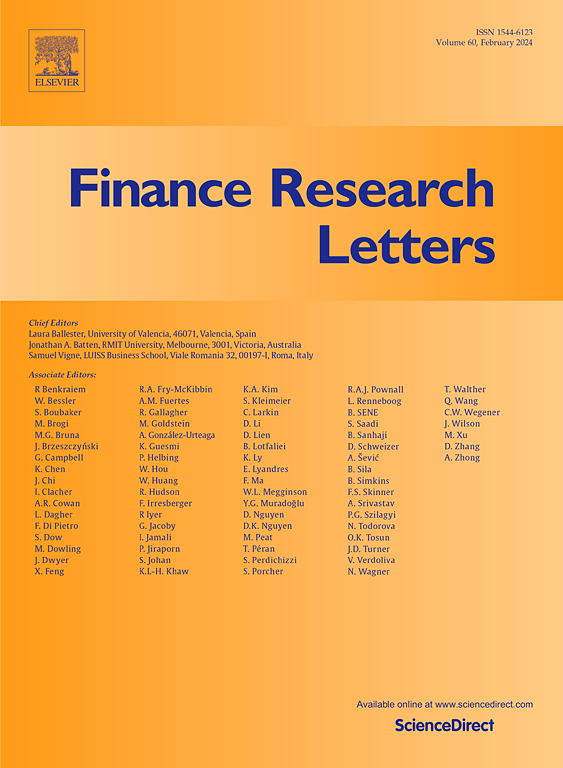生物多样性风险和公司效率
IF 7.4
2区 经济学
Q1 BUSINESS, FINANCE
引用次数: 0
摘要
本研究探讨了生物多样性风险对企业效率的影响。通过分析 2001 年至 2020 年的 23750 个企业年观测数据,我们发现生物多样性风险与企业效率之间存在显著的负相关关系。我们的研究表明,生物多样性风险导致的外部融资需求增加和资本成本上升是导致企业效率降低的主要原因。生物多样性风险较高的企业效率较低,特别是那些特异性波动较大的企业。这些发现凸显了生物多样性风险带来的经济成本和运营挑战,为了解生物多样性风险对企业效率的直接影响提供了新的视角。本文章由计算机程序翻译,如有差异,请以英文原文为准。
Biodiversity risk and firm efficiency
This study examines the impact of biodiversity risk exposure on firm efficiency. Analyzing 23,750 firm-year observations from 2001 to 2020, we identify a significant negative relationship between biodiversity risk and firm efficiency. Our research indicates that increased external financing needs and higher capital costs, driven by biodiversity risk, are key channels contributing to reduced firm efficiency. Firms with higher biodiversity risk exposure demonstrate lower efficiency, especially those with greater idiosyncratic volatility. These findings highlight the economic costs and operational challenges posed by biodiversity risk, offering new insights into its direct impact on firm efficiency.
求助全文
通过发布文献求助,成功后即可免费获取论文全文。
去求助
来源期刊

Finance Research Letters
BUSINESS, FINANCE-
CiteScore
11.10
自引率
14.40%
发文量
863
期刊介绍:
Finance Research Letters welcomes submissions across all areas of finance, aiming for rapid publication of significant new findings. The journal particularly encourages papers that provide insight into the replicability of established results, examine the cross-national applicability of previous findings, challenge existing methodologies, or demonstrate methodological contingencies.
Papers are invited in the following areas:
Actuarial studies
Alternative investments
Asset Pricing
Bankruptcy and liquidation
Banks and other Depository Institutions
Behavioral and experimental finance
Bibliometric and Scientometric studies of finance
Capital budgeting and corporate investment
Capital markets and accounting
Capital structure and payout policy
Commodities
Contagion, crises and interdependence
Corporate governance
Credit and fixed income markets and instruments
Derivatives
Emerging markets
Energy Finance and Energy Markets
Financial Econometrics
Financial History
Financial intermediation and money markets
Financial markets and marketplaces
Financial Mathematics and Econophysics
Financial Regulation and Law
Forecasting
Frontier market studies
International Finance
Market efficiency, event studies
Mergers, acquisitions and the market for corporate control
Micro Finance Institutions
Microstructure
Non-bank Financial Institutions
Personal Finance
Portfolio choice and investing
Real estate finance and investing
Risk
SME, Family and Entrepreneurial Finance
 求助内容:
求助内容: 应助结果提醒方式:
应助结果提醒方式:


